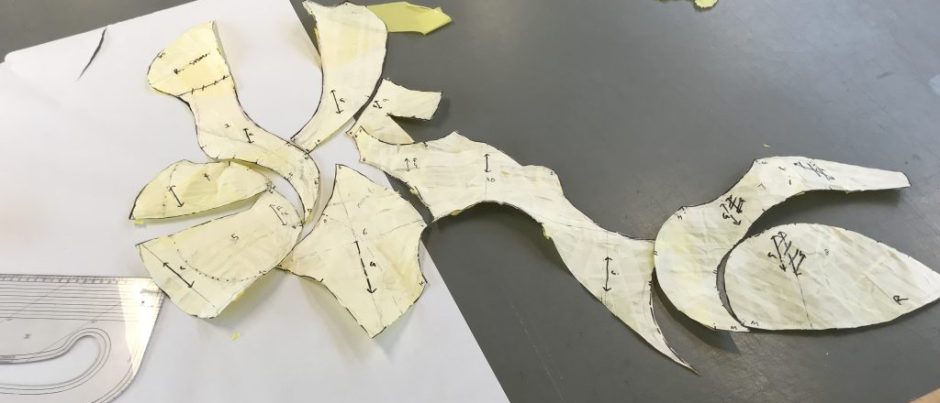Sticky notes are something which I use a lot in my own practice as a way of organising my thoughts and ideas. They are colourful, movable, and impermanent. The way they can be displayed, moved around, and taken away also appeals in finding clarity of thought and organisation.
Unrelated to the amount I use them in my own practice, they were suggested in my second group tutorial by Catherine as a way of collecting data within the planned clothes swap workshops.
Sticky notes as a kind of design material: How sticky notes support design cognition and design collaboration (Ball et al, 2021)
“We find that the affordances of sticky notes make them well-suited to supporting cognitive processes associated with visualising and understanding “part/whole” relationships in concept development. Furthermore, sticky notes facilitate design collaboration by enabling shared attention through material anchors and the modulation of turn-taking”. (pg 1)
This paper discusses the general use and valuing of sticky notes in design environments in its introduction and literature review. This includes a discussion around the intuition and accessibility of them as tools – they do not need explanation or prior knowledge. This makes them particularly suited to the situation in which I am hoping to use them, in which I am trying to pull in people who may not usually use the space, possibly due to feeling intimidated or not ‘expert’ enough for costume activities.
This suspicion was confirmed in the focus group with students, who agreed that although they do not feel that way, they know that others do.
There is talk in this paper of the sticky notes being useful for externalising, giving form to, and connecting ideas. They are a useful tool in relating seemingly unconnected ideas to one another, and are ideal in collaborative idea generation processes.
Usually they are used to write one to three word on, usually nouns. Perhaps, in order to gather an understanding of the students focus and ideas around sustainable practices, I could consider using quite an open question, on which they write an answer.
I would need to work out a system for this concept.
Perhaps, on entry, for every item you are given a post-it note/ card. You must label the item with where it came from (who/what shop/an anecdote/ ‘”how I got here?”) which could be answered in a drawing, or a few words (say, on a pink piece of card). The next part could be labelling what you like about this garment, and what you hope for the future of a new garment you are taking home. In order to take the garment home, you have to draw/write on the card, and give it to me at the ‘cashier desk’, where I would photograph both the labels, with the garment before it is taken. This second labelling is how you ‘pay’ for the garment’.
This would encourage wider thinking about life cycles. I would then also be able to gather these post it notes together, and display them somewhere, maybe as data presentation for my final presentation.
In the mending workshop, which maybe I should call a repair workshop, I could use post-it notes to look at types of repair, or perhaps some kind of ‘issue/diagnosis/prescription’ system. They may need to bring their item ahead of time, or I may need to enlist the help of someone else, or instructions, like a pharmacist system.
Or I could integrate the questionnaire into this, and ask everyone to participate throughout the evening.
The questions could be:
- How often to do visit the costume studio?
- How do you feel about the costume studio?
- What brought you to this workshop?
- Did you find it helpful or useful?
- Would you like more workshops like this one?
- What could be better or different about this workshop?
References
Ball, Linden & Christensen, Bo & Halskov, Kim. (2021). Sticky Notes as a Kind of Design Material: How Sticky Notes Support Design Cognition and Design Collaboration. Design Studies. 76. 10.1016/j.destud.2021.101034.
